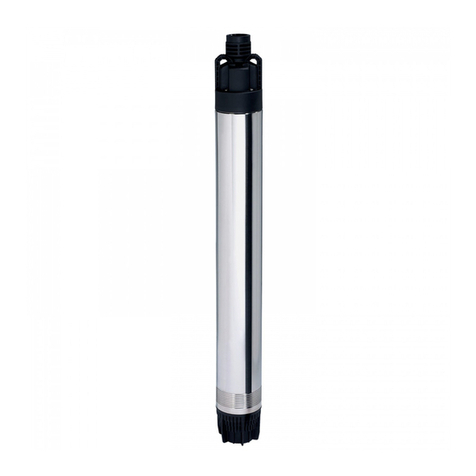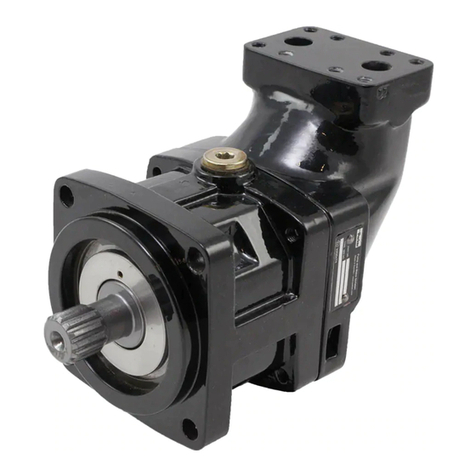SEC Sentry 822 PS User manual

1
Model 822 PS Pump Sentry
Owner's Manual
SEC America Corp.
SEC
Model 1622 PS Pump Sentry
November 5, 2019

2
Index
Page
Quick Installation & Battery Essentials………………….. 3
Precautions and Sequencing During Initial Hookup…. 4
How Pump Sentry Works……………………………..…….. 5
Important Safety Instructions…………………………….... 6
Safety Warnings……………………………………………… 7
Battery Precautions………………………………………….. 8
Battery Box……………………………………………………. 10
Installation Location…………………………………………. 10
Making Connections…………………………………………. 11
Installation Test………………………………………………. 11
Changing the Battery………………………………………… 12
Charger Functions.…………………………………………… 13
Uninterruptible Power Indicator …………………………… 13
Fan Operation ………………………………………………… 13
How to Discern when Pump Sentry
is Operational in Back Up Mode …………………………… 15
How to Discern when Pump Sentry
is Operational in Standby Mode …………………………... 15
Fuses …………………………………………………………… 15
Audible Alarm …………………………………………………. 15
Warranty……………………………………………………….. 16

3
Pump Sentry™
Models 822 PS & 1622 PS
INSTALLATION INSTRUCTIONS
QUICK INSTALLATION & BATTERY ESSENTIALS
Pump Sentry™ is designed to operate with an external battery or battery bank
whose nominal operating voltage is 12V, and whose single or combined A-
Hr. rating does not exceed 250 A-hr. A full recharge will take 13 hours or 30
hours for batteries of 100 A-hr. and 250 A-hr. respectively. Pump Sentry™
will maintain batteries at full charge while electricity is available. See page 13
of this manual to learn more about the charger function indicators.
BATTERY TYPE
Only batteries conforming to Battery Council International (BCI) group size
27 or larger are recommended (up to size 31). Only deep cycle batteries are
designed for the type of service which Pump Sentry™ requires. INSTALL
ONLY deep cycle batteries. (wet cell or AGM type) The marine-variety is
acceptable. DO NOT use car batteries. (See page 8 for some suggested
sources.)
BATTERY BOX
Your selected battery(ies) should be installed in a high quality plastic or metal
battery box that comes with a lid that is designed for said box. It is available
at the point of battery purchase.
BATTERY CABLES
Use only the cables furnished with Pump Sentry™ that are packaged in its
carton. They are equipped with the terminations necessary for reliable and
solid connection.
The ends with the blade terminals mate with the RED and BLACK battery
cable connectors on the Pump Sentry, while the other ends are furnished with
Ring terminals designed to fit over the wing nut posts of most batteries.

4
PRECAUTIONS & SEQUENCING DURING INITIAL HOOKUP
a) Secure Pump Sentry™ in its designated spot. It is recommended that
the unit be placed on a shelf or mounted to a wall.
b) Make sure the ON/OFF switch is in the OFF position and that the Pump
Sentry™ power cord is not plugged into an AC outlet.
c) Connect the blade end of the red battery cable supplied with the unit
into the red terminal block located adjacent to the fan air intake port.
Tighten the set screw of the block till the cable is well secured.
d) Perform the sequence in see with the black cable into the black terminal
block located adjacent to the red one.
e) Slide the battery into its protective box and place into its designated
spot sufficiently close to the Pump Sentry™ to allow the battery cables
to reach. DO NOT USE LONGER CABLES THAN THOSE
SUPPLIED WITH PUMP SENTRY™ as this may adversely affect the
time available for backup operation.
f) Connect the ring terminal end of the BLACK battery cable to the
battery NEGATIVE terminal.
g) Connect the ring terminal end of the RED battery battery cable to the
battery POSITIVE terminal. WARNING: WHEN DOING THIS STEP
THERE WILL BE A PERCEPTIVE SPARK AT THE TERMINAL
AS SOME COMPONENTS IN THE PUMP SENTRY™ CHARGE
UP. THIS IS NORMAL.
h) Once (g) is completed cover your battery box and secure the lid.
i) Plug the sump pump into the Pump Sentry™.
j) Plug the Pump Sentry™ into a wall outlet which has a minimum
capacity of 20A.
k) Turn ON the ON/OFF switch located to the left of the fan air intake
port.
l) Installation is complete.
INSTALLATION TEST
To make sure the installation is good, it should be tested per the following:
a) Raise the water level float switch controlling the pump causing the
pump to go ON.
b) Disconnect the Pump Sentry’s plug, mentioned in (j), from the wall
outlet. After a slight pause your sump pump should continue to operate.
If it does not, review steps (a) though (l) above.

5
The Pump Sentry™ is an innovative power station designed to operate your
pump during a power outage. When properly installed, it will provide many
years of reliable service.
To ensure that the Pump Sentry™ is optimally used and properly connected,
we recommend its installation be made by a licensed electrician or fully
qualified professional. Read these instructions completely and follow
directions carefully.
AC Utility Power
12 Volt
Battery
Figure 1
1622PS/822 PS
Pump +-
How The Pump Sentry Works
When electricity is present, the Pump Sentry™ charges a 12-volt battery and
surveys the power line. At the instant that a power failure occurs, the Pump
Sentry converts the energy stored in the battery to AC power to operate your
pump. When AC utility power is restored, the Pump Sentry automatically
switches your pump back to AC utility power, recharges the battery, and
monitors the power line.
While the Pump Sentry is a sophisticated electronic device, it should not be
expected to perform beyond its limitations, and extreme care should be taken
to insure safe operation within specifications.

6
IMPORTANT SAFETY INSTRUCTIONS
READ AND SAVE THESE INSTRUCTIONS – THIS MANUAL
CONTAINS IMPORTANT INSTRUCTIONS
FAILURE TO FOLLOW SAFETY INSTRUCTIONS AND
WARNINGS COULD RESULT IN INJURY OR DEATH
Read all the instructions
before installing or
operating the Pump Sentry.
ALWAYS disconnect
batteries and AC power
source from the Pump
Sentry before storing,
handling, or making any
adjustments to the unit.
Use Pump Sentry only as
described in this manual.
Any other use not
recommended by the
manufacturer may cause
fire, electric shock, or
injury.
Do Not sit or stand on the
Pump Sentry unit. Keep
children away!
Do Not place objects on the
Pump Sentry unit or allow
vents to become blocked.
Do Not smoke, use sparking
electrical devices, or allow
open flame near the unit
while working with it.
Do Not install Pump Sentry
in locations classified as
harzardous per N.E.C.
ANSI/NFPA 70 – 1984.
WARNING:
ELECTRICAL SHOCK
HAZARD
This unit has not been
evaluated for use outdoors.
Never operate Pump
Sentry outdoors.
Never operate Pump Sentry
with battery enclosure open.
Never operate Pump Sentry
in a wet location.
Never operate Pump Sentry
in a location where liquid or
moisture will come in
contact with, splash, or drip
into unit.
Do Not insert or allow
foreign objects to enter any
ventilation or exhaust
opening as this may cause
electrical shock and/or fire
hazard.

7
WARNING:
RISK OF ELECTRICAL
SHOCK
In the event of a short circuit,
grounding reduces the risk of
electrical shock by providing a
safe path to ground. The Pump
Sentry must be properly grounded.
The Pump Sentry is equipped with
a cord having a ground wire with
an appropriate three pronged plug.
The plug must be used with an
outlet that has been installed and
grounded in accordance with all
local electrical codes and
ordinances. Where a two pronged
wall outlet is encountered, it must
be replaced with a three pronged
outlet by a qualified Electrician to
reduce the risk of shock, the third
prong must not be cut off the plug.
DO NOT attempt to defeat this
safety feature.
Use Pump Sentry only with
adequate wiring that is up to
electrical code specifications.
Connect to properly grounded
outlets only.
WARNING:
RISK OF ELECTRICAL
SHOCK
The Pump Sentry is capable of,
and intended to generate electrical
voltage when unplugged from a
wall outlet or when AC power is
shut off.
Because Pump Sentry uses batteries to
generate 120 volts of AC power, both
the batteries and the power cord must be
disconnected to neutralize the Pump
Sentry. Failure to disconnect both the
batteries and the power cord could result
in electrical shock sufficient to cause
injury or death
FAILURE TO COMPLY WITH THE ABOVE WARNINGS COULD
RESULT IN INJURY OR DEATH

8
BATTERY PRECAUTIONS:
WARNING:
IMPORTANT SAFETY INSTRUCTIONS
SAVE THESE INSTRUCTIONS.
1. Servicing of batteries should
be performed or supervised
by a person knowledgeable
about batteries and the
required precautions. Keep
unauthorized personnel
away from batteries.
2. When replacing batteries,
use only models conforming
to Battery Council
International (BCI)
specifications for Group
size 27 or larger Deep
Cycle Marine batteries. At
the time of this publication,
the following model
batteries are typical of
minimum requirement. At
the time of purchase, verify
that the battery to be used
will be of BCI Group size
27 or larger .
Examples of Group 27
Deep Cycle Marine Battery
models:
Die Hard Model 27524
Exide Model NC-27
Interstate Model SRM-27
Metropolitan Model 27T-36
NAPA Model 8270
Larger BCI group sizes and
multiple-battery arrays may
also be used to increase
backup longevity.
3. CAUTION – Do Not
dispose of batteries in a fire.
The batteries might explode.
4. CAUTION – Do Not open
or mutilate the batteries.
Released electrolyte is
harmful to skin and eyes
CAUTION – A battery can
present a risk of electrical
shock and high short circuit
current. The following
precautions should be
observed when working on
batteries.
A. Remove Watches, Rings,
and other Jewelry and
metal objects.
B. Use tools with insulated
handles.
C. Do Not lay tools or metal
objects on top of
batteries.
D. Wear safety goggles and
a face shield.
5. CAUTION – The
electrolyte is a diluted
sulfuric acid mixture that is
Corrosive and harmful to
the skin and eyes. It is also
electrically conductive.
Observe the following rules

9
when working with the
electrolyte solution.
A. Wear full eye
protection and
clothing.
B. If electrolyte comes in
contact with the skin,
wash if off
immediately.
C. If electrolyte comes in
contact with the eyes,
flush thoroughly with
water and seek
medical attention
immediately.
6. CAUTION – Lead acid
batteries can present a risk
of fire and explosion
because they generate
hydrogen gases. The
following precautions must
be followed.
A. Do Not smoke when
near batteries.
B. Do Not cause sparks
or allow open flame
in the battery area.
C. Discharge static
electricity from your
body and clothing
before touching
batteries by first
touching a grounded
surface.
7. See Battery Manufacturers’ installation manual for additional
safety and maintenance instructions.

10
BATTERY BOX
Your selected battery should be
stored in a high quality plastic or
nylon battery box with a lid that is
designed for this purpose.
LOCATION
In a typical installation, the
Pump Sentry should be
mounted on the wall, above
the sump pit or crock, and in
accordance with all
applicable local electrical
codes.
It should be in close
proximity to a grounded AC
outlet and the battery box
(not closer than 2 feet).
VENTILATION
Do Not block either the fan
or the exit air ports of the
Pump Sentry. Allow at least
2 inches of air clearance on
all sides. Any room in which
the Pump Sentry is mounted
should have adequate
ventilation.
UNDER NO
CIRCUMSTANCES
Should the Pump Sentry be
mounted in a confined area or in
a sump pump pit or crock.
Pump Sentry is not only an
electrical appliance, but also
produces a potentially
dangerous and hazardous
electrical current even when
a power outage occurs. It is
safe when installed and used
properly. Keep children
away.
WARNING! The Pump Sentry has several components with
electrical contacts that switch electrical currents. Opening or
closing any of these electrical contacts can produce a spark that
could ignite an explosive air mixture. To prevent fire or
explosion, do not install the Pump Sentry in any area which
might contain flammable liquids or gases. Do not install Pump
Sentry in the same confined area as the battery box.

11
MAKING CONNECTIONS
After mounting Pump Sentry to the
wall, follow these steps.
Make sure the ON/OFF
switch is in the OFF
position.
Connect the red battery
cable to the Red (Positive) +
terminal of the Pump
Sentry.
Connect the black battery
cable to the Black
(Negative) – terminal of the
Pump Sentry.
WARNING! DO NOT
REVERSE THESE
CONNECTIONS. DAMAGE
TO THE PUMP SENTRY
WILL OCCUR AND YOU
WILL VOID THE
WARRANTEE.
WARNING! A spark may
occur when connecting the
second cable. This is normal.
An explosion hazard may
exist if flammable liquid or
gas is present. INSTALL
AND OPERATE PUMP
SENTRY IN A WELL
VENTILATED AREA
ONLY.
Plug your pump into the
Pump Sentry’s AC
outlet.
Plug the Pump Sentry
into a 120 volt AC
outlet.
Turn ON/OFF switch to
the ON position.
INSTALLATION TEST
After making the
connections as instructed
above, cycle the pump to
ensure its operation under
normal conditions.
Remove power cord from
the AC wall outlet to
simulate a power failure.
The fan will not necessarily
be activated. It is thermostat
controlled and will turn only
when the temperature of the
wall of the stove sentry
exceeds 45C (113F).
Cycle the pump to ensure
operation in “battery back
up” mode.
Plug the Pump Sentry AC
power cord back into the
wall outlet. Cycle the pump.
Note that after 2 seconds at
least one of the Battery
Monitor LEDs has lit. This
is normal and is an
indication that the Pump
Sentry has recognized the
return of normal AC power.
The Pump Sentry is no

12
longer in “battery back up”
mode and has returned to its
normal state of charging the
battery and providing line
power.
CHANGING
THE
BATTERY
If for any reason the battery needs
changing, it is important to follow
the steps below, in the order shown
to avoid damage to the Pump
Sentry unit.
1. Turn the ON/OFF switch
on the Pump Sentry to the
OFF position.
2. Unplug the input power cord
of the Pump Sentry from the
AC outlet.
3. Unplug the input power cord
of the pump from the AC
outlet on the Pump Sentry
4. Disconnect the battery
cables from the battery.
CAUTION: MAKE SURE
THAT THE PUMP
SENTRY IS
DISCONNECTED FROM
AC POWER BEFORE
DISCONNECTING
BATTERY CABLES.
5. Replace the battery.
6. Reconnect the Pump Sentry
following the steps under
the heading MAKING
CONNECTIONS.
MAINTENANCE
Once properly connected, the
Pump Sentry requires no
maintenance. When AC power
fails, it will automatically convert
battery power to AC power for
operation of the pump. It will
automatically recharge the battery
when AC power returns. During
all of these times and power
transitions, the Pump Sentry
requires no manual adjustments.
SPECIFICATIONS ARE SUBJECT TO CHANGE WITHOUT NOTICE.

13
Charger Function s
The smart charging system in Pump Sentry is microprocessor controlled to yield optimum charging rates
and long battery life.
When the electrical source is restored allowing the resumption of the charging process, there is a 2
second delay during which the charge state of the battery is assessed. After this delay, the bottom of the
two LED indicators comprising the battery monitor will illuminate. These LEDs inform the user
regarding the state of the battery:
LED State of Battery
Bottom LED “Flashing” - The battery is in the process of recharging.
Bottom LED “On” - The battery is fully charged.
Replace Battery LED - When batteries age to the point where they can maintain their fully
charged state only for short periods of time, it is an indication that their capacity
has decreased. They no longer have the ability to sustain their loads as they did
when they were new. The Pump Sentry detects this degradation causing the
Replace Battery LED to illuminate. When the battery reaches below 50% of its
new battery state, this condition is detected by the monitor. Other LED’s may be
lit at the same time.
Figure #1 on page 14 shows the Battery Monitor LED array.
Uninterruptible Power Indicator
The “Power Output” indicator shown in Figure #1 informs the user that AC power is present at the
output receptacle providing power to the load. This LED is applicable to both the standby (AC line
power present) and Back Up (Battery Power) states.
This LED will be extinguished in the following situations:
a) The main fuse is blown (in the Standby or Back Up states). See Section on Fuses (Page 15)
b) The battery is exhausted (in the Standby state)
Figure #1 on page 14 shows the location of this Uninterruptible Power Indicator.
Fan Operation
The air-intake fan, located adjacent to the red DC cable terminal, is thermostat controlled. It operates
only when the internal surface of the Pump Sentry exceeds 100F. This eliminates unnecessary fan
operation thereby minimizing battery loading.

14
Figure #2
Charger Fuse
Main Fuse
F1
F2
SIDE VIEW
Figure #1
ON/OFF
Inverter
TOP VIEW
POWER OUTPUT
Active When Lit
Charged = ON
Replace Battery
Charging = Flashing
BATTERY MONITOR
ALL Battery Indicators Are OFF
When Utility AC is Down

15
How to Discern When Pump Sentry is Operational in the Backup Mode
When all LED’s of the battery monitor are OFF, and the pump sentry is plugged into an AC outlet, the
unit is in the back up mode. In this mode when there is sufficient energy in the battery to operate the
system, the uninterruptible power LED is illuminated. Once the battery is depleted the uninterruptible
power light will extinguish, indicating an absence of AC power at the Pump Sentry’s output.
How to Discern When Pump Sentry is Operational in the Standby (Line Power) Mode
When at least one of the Battery Monitor LED’s in ON, and the pump sentry is plugged into an AC
outlet, the unit is in standby mode. In this mode, the uninterruptible power LED remains illuminated.
Fuses
Figure #2 on page 14 shows the location of two protective fuses F1 and F2.
F1, the charger fuse, provides protection against charger or battery catastrophic failure. When this fuse is
blown the pump sentry will operate on standby power only until the battery is depleted.
F2, the main fuse, provides secondary protection against severe overload. When this fuse is blown, 120
VAC to the output receptacle of the pump sentry is cut off. In this state, the Uninterruptible Power LED
will be OFF. Replace fuses only with the types indicated on the fuse rating label of your unit which can
be found next to the fuse holders on the flat side of the unit to the left of the line cord.
Audible Alarm
While operating on Battery Backup Power, when the battery is depleted to the point where it dips below
10.8V, a high pitched audible alarm is emanated from the Pump Sentry. This is a sign, to the user, that
he will imminently loose battery power. If the maintenance of battery power is crucial, the user may
substitute the spent battery for a fully charged one, by carefully following the directions in the section
“Changing the Battery” on page 12.
If the audible alarm is found to be irritable, it may be turned off by simply turning off the ON/OFF
switch of the pump sentry. IT IS IMPORTANT TO TURN THIS SWITCH BACK “ON” WHEN THE
UNIT’S OPERATION IS REINSTATED. This should take place when utility power comes back on or
after the battery has been replaced. FAILURE TO DO THIS WILL LEAVE THE USER WITHOUT
BACK UP PROTECTION.

16
Pump Sentry 822 PS, 1622 PS
Manufactured by
SEC America Corp.
S. Burlington, VT, 05403
Manufacturers Limited Warranty
Pump Sentry is warranted to be free from defects in material and workmanship and
to perform within applicable specifications for a period of two years after original
shipment. Obligation under this guarantee is limited to repairing or replacing any
part thereof, except fuses and pilot lights, which shall within one year returned to
us with transportation charges prepaid, and prove after our examination to be thus
defective.
The above limited warranties take the place of all other warranties, expressed of
implied and correction of such defects by replacement or repair shall constitute a
fulfillment of all obligations under the terms of the warranties. The warranties do
not cover any unit, which has been damaged either in transit or by misuse, accident
or negligence. No warranty or representation by anyone other than this Company
shall be binding on us.
SEC America Corp.
78 Ethan Allen Drive,
S. Burlington, VT 05403
This manual suits for next models
1
Table of contents
Popular Water Pump manuals by other brands
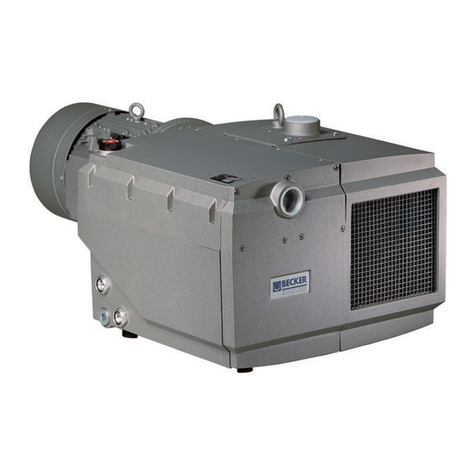
Becker
Becker U 4.70 Series Repair and service manual

GORMAN-RUPP
GORMAN-RUPP AMT 4S13XZR manual

Graco
Graco Bulldog 245185 instructions

Oase
Oase Aquarius Universal Classic 600 operating instructions

Aspen Pumps
Aspen Pumps PERI PRO AIR Installation
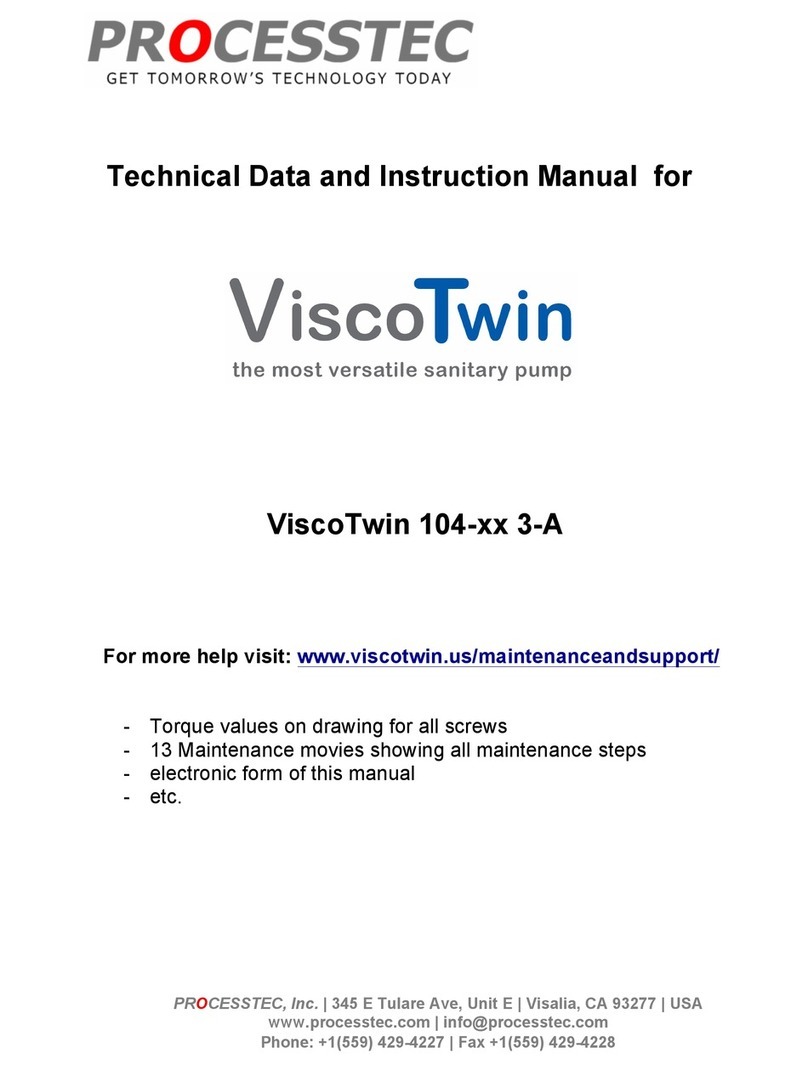
PROCESSTEC
PROCESSTEC ViscoTwin 104 3-A Series Technical data
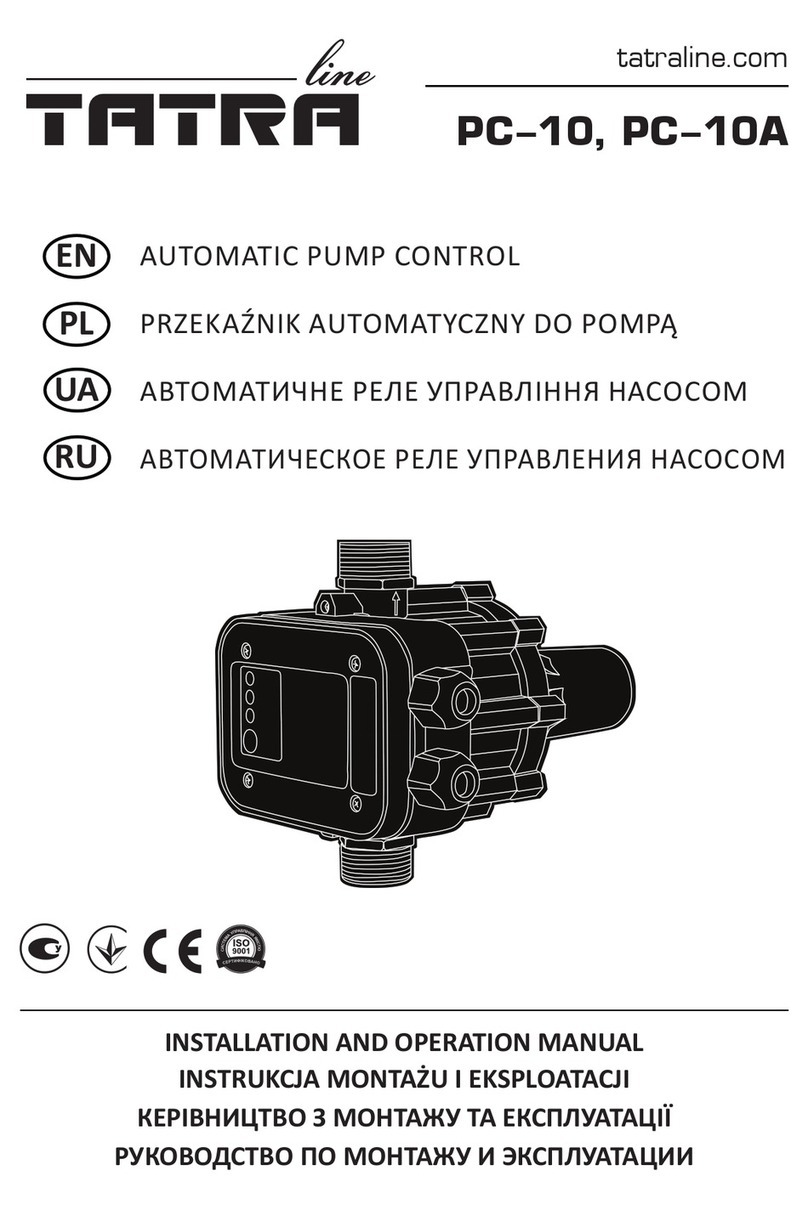
TATRA
TATRA PC-10 Installation and operation manual

Samoa
Samoa Larius 2 Operating and maintenance manual
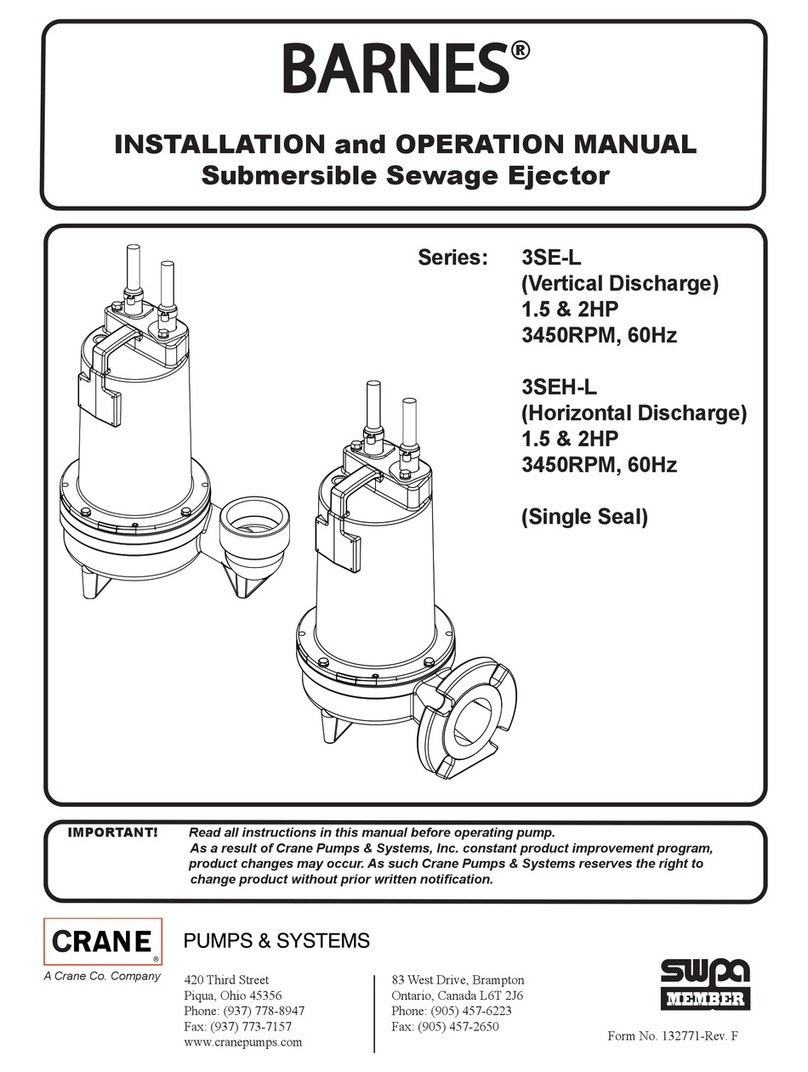
Barnes
Barnes 3SEH-L Installation and operation manual
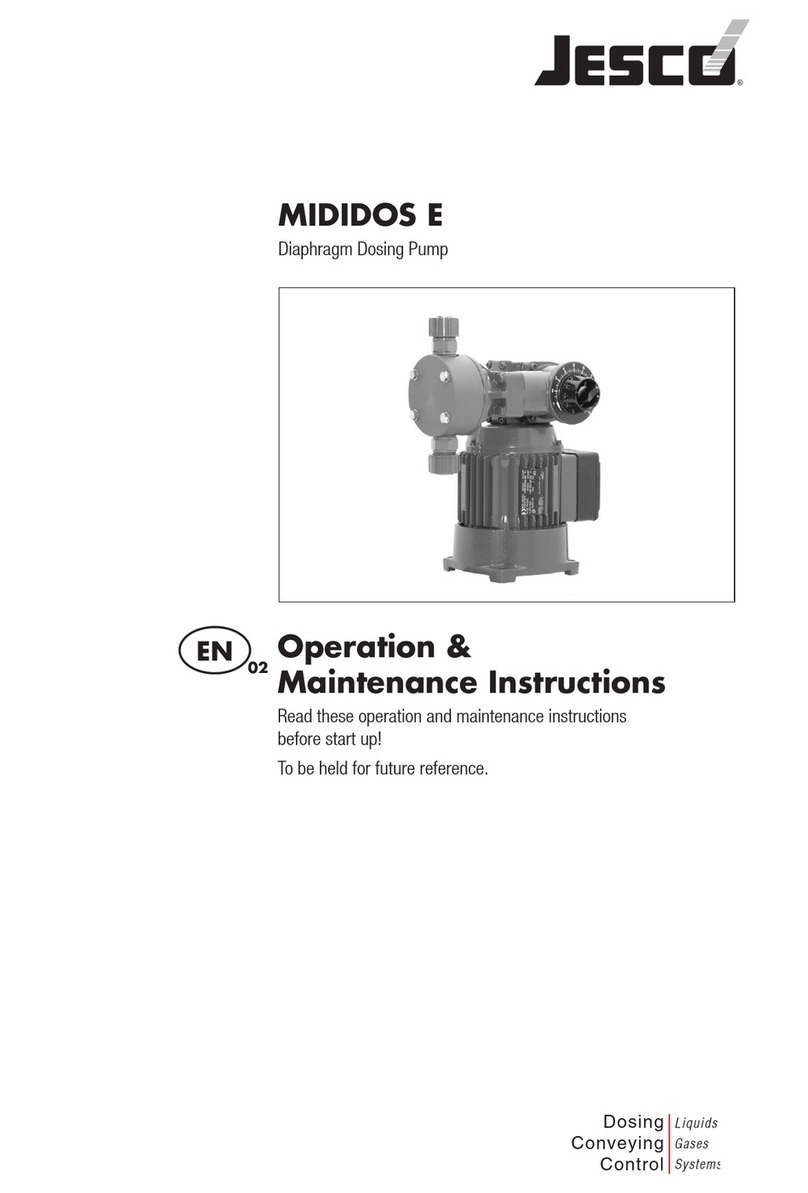
Jesco
Jesco MIDIDOS E Series Operation & maintenance instructions
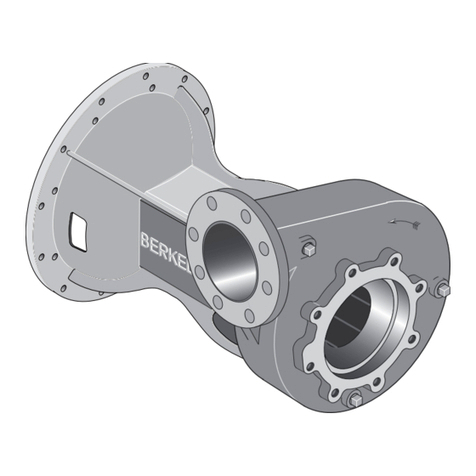
Berkeley
Berkeley S.A.E. Installation, Repair, and Operating Instructions

Calpeda
Calpeda NCES Series Original operating instructions


